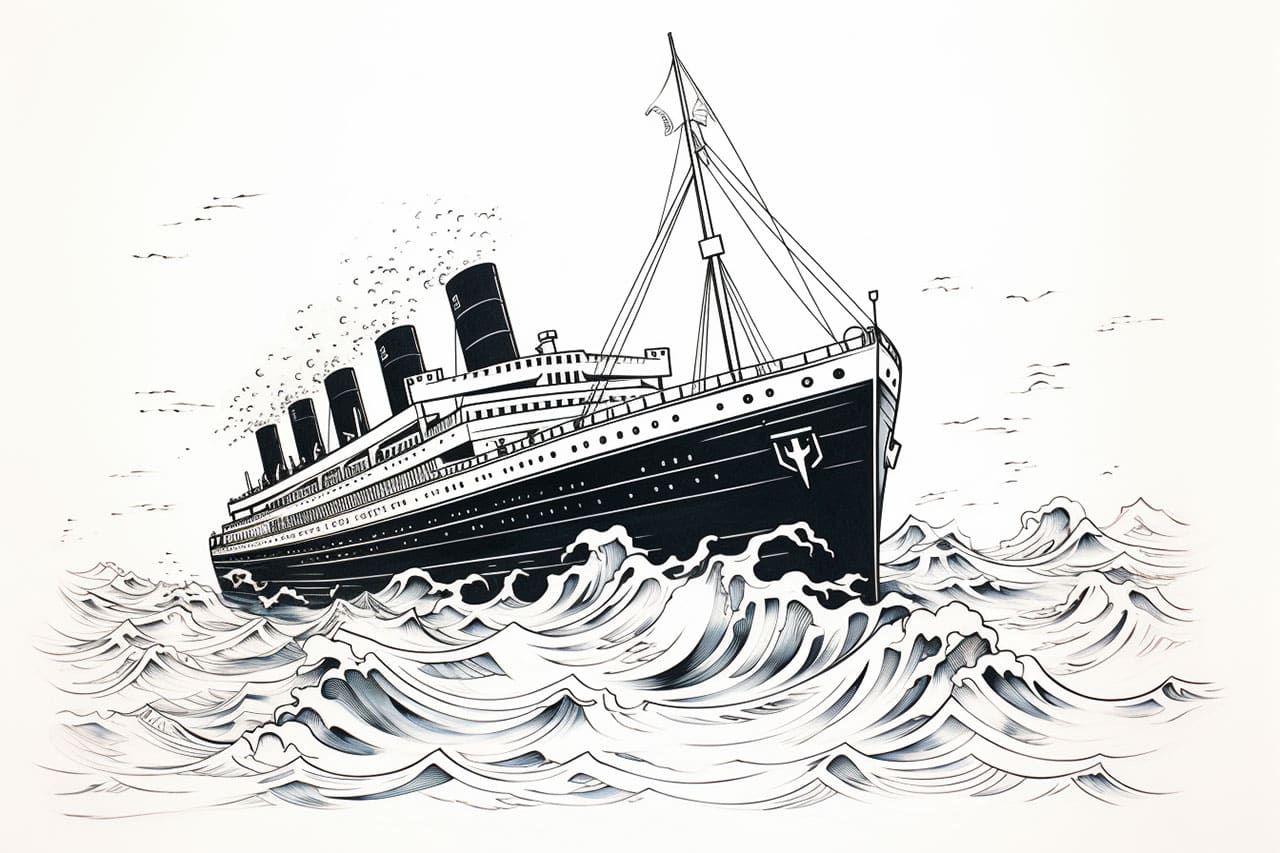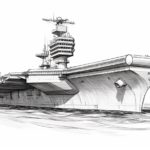Welcome to this detailed step-by-step guide on how to draw the Titanic, one of the most iconic and historically significant ships ever built. Known for its grandeur, elegance, and tragic story, the Titanic has captured the imagination of people around the world for over a century. Whether you’re a fan of maritime history, fascinated by classic engineering, or simply looking for a rewarding artistic challenge, drawing the Titanic is a fantastic way to bring this legendary ship to life on paper.
In this tutorial, we’ll guide you through the process of drawing the Titanic from start to finish. You’ll learn how to break down its massive form into basic shapes, add essential details like the smokestacks and lifeboats, and apply shading and perspective to give your drawing depth and realism. Whether you’re a beginner building your skills or an experienced artist aiming to create a polished nautical piece, this guide will provide the tools and tips you need to confidently draw your own version of the Titanic. So grab your pencils and paper—let’s set sail on this artistic journey together!
Materials Required
Before we begin, let’s gather the materials you will need for this drawing:
- Drawing paper or sketchbook
- Pencils (HB, 2B, and 4B)
- Eraser
- Sharpener
- Ruler
- Reference image of the Titanic (You can easily find one online)
Now that we have our materials ready, let’s dive into the step-by-step drawing process.
Step 1: Basic Outline
Begin by lightly sketching the basic outlines of the Titanic on your drawing paper. Start with a horizontal line near the top of the page to represent the waterline. Then, draw a slightly curved line above it to represent the upper deck of the ship. Next, sketch the front and back of the hull by drawing two long, slightly curved lines, connecting them at the ends. Finally, add a few vertical lines to represent the windows and portholes.
Step 2: Adding Details
Once you have the basic outline in place, start adding more details to your drawing. Begin with the upper deck by sketching the main structures such as the smokestacks, cabins, and the bridge. Take your time and refer to your reference image to ensure accuracy. Use light, gentle strokes for this stage, as you can refine and darken the lines later.
Step 3: Hull and Portholes
Now, focus on adding more details to the hull and portholes of the Titanic. Pay attention to the various levels and layers of the ship. Draw the different decks, lifeboats, and any other prominent features you see. Take your time to capture the intricate details and proportions accurately.
Step 4: Shading and Textures
To bring your drawing to life, it’s essential to add shading and textures. Start by identifying the light source in your reference image and visualize how it falls on the ship. Use a softer pencil such as a 2B or 4B to create gradual and smooth shading. Apply more pressure to create darker areas and less pressure for lighter areas. Pay attention to the subtle variations in shades and textures that give the Titanic its realistic appearance.
Step 5: Refining and Finalizing
Once you have completed the shading, take a step back and assess your drawing. Look for any areas that need refinement or correction. Use your eraser to clean up any smudges or mistakes. Sharpen your pencil to add finer details and crisp lines where necessary. Take your time during this stage to ensure that your drawing looks polished and complete.
Conclusion
Congratulations! You have successfully drawn the Titanic using this step-by-step guide. By following the instructions and taking your time to observe and replicate the details, you have created a beautiful artwork of this historic ship. Remember, practice makes perfect, so don’t hesitate to try this tutorial multiple times to enhance your skills as an artist. Enjoy the process and have fun exploring your creativity!
Gallery of Titanic Drawings
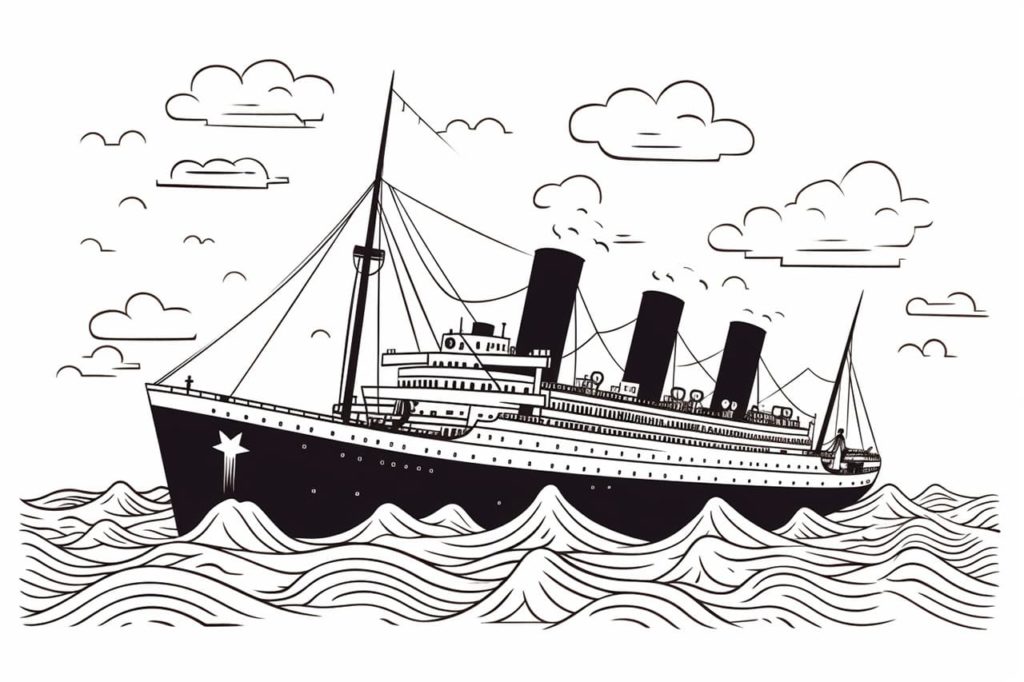
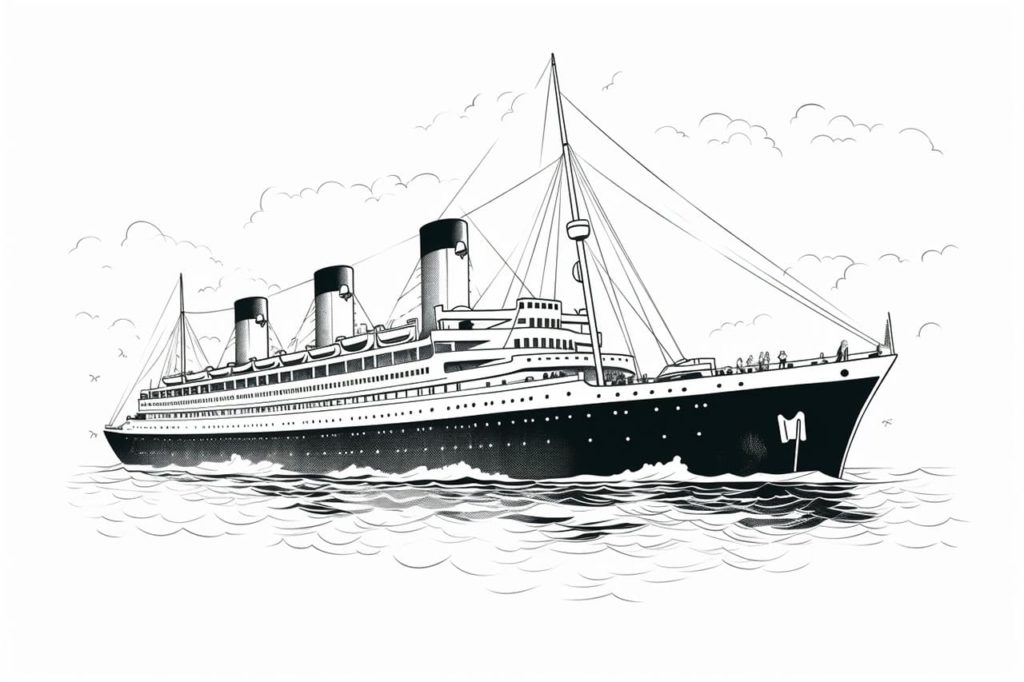
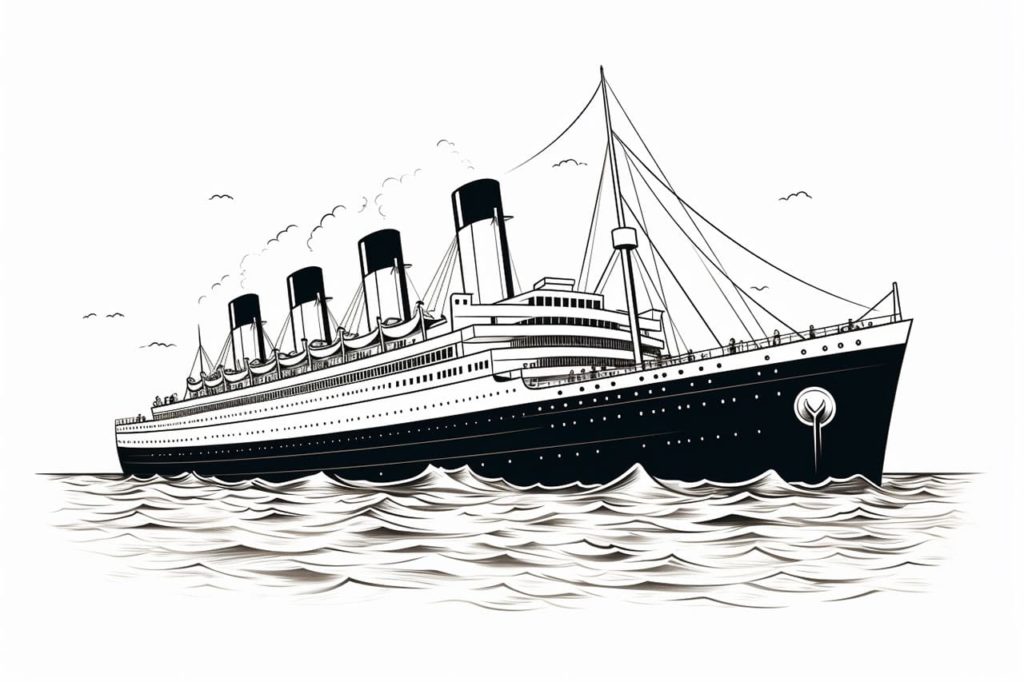
Fun Facts About Titanics
- The Titanic was one of three Olympic-class ocean liners built by the White Star Line, alongside the Olympic and Britannic.
- Titanics were known for their luxurious amenities, including a swimming pool, gymnasium, and grand staircase.
- The Titanic measured about 882 feet (269 meters) in length, making it the largest ship afloat at the time of its maiden voyage.
- Titanics featured four massive smokestacks, though only three were functional; the fourth was added for aesthetic balance.
- The ship was designed to carry over 2,400 passengers and crew, but it had lifeboats for only about half that number.
- Titanics were equipped with advanced safety features for their era, such as watertight compartments and remotely activated watertight doors.
- The Titanic’s hull was constructed using over three million rivets.
- Titanics were powered by a combination of steam engines and a steam turbine, driving three propellers.
- The Titanic’s maiden voyage began on April 10, 1912, from Southampton, England, to New York City.
- Despite being called “unsinkable,” the Titanic tragically sank after hitting an iceberg on April 15, 1912.
Suggestions for Scenes and Settings for Titanic Drawings
- Titanic Departing Southampton
Capture the excitement and grandeur as the Titanic leaves the dock, with crowds waving from the harbor and steam billowing from the funnels. - Titanic Under a Starlit Night
Illustrate the ship gliding gracefully across a calm, moonlit Atlantic, with stars reflecting on the water’s surface. - Titanic and the Iceberg
Dramatize the fateful encounter: the Titanic looming in the night with an iceberg ahead, illuminated by the ship’s lights. - Aboard the Promenade Deck
Show passengers strolling along the elegant decks, with deck chairs, lifeboats, and the ocean stretching beyond the rails. - The Grand Staircase Interior
Depict the opulent heart of the ship—a sweeping staircase, ornate details, and passengers in early 20th-century attire. - Titanic in the Early Morning Mist
Imagine the Titanic emerging from a foggy dawn, with soft light highlighting its massive silhouette. - Lifeboats Being Launched
Portray a tense, historic moment: passengers boarding lifeboats as the crew works urgently under the glow of lanterns. - Titanic at Sunset
Paint a serene scene of the ship silhouetted against a vibrant sunset, with warm colors reflecting on the water. - Titanic’s Bow Cutting Through Waves
Focus on the ship’s powerful bow slicing through waves, emphasizing its size and engineering. - Titanic Shipwreck on the Ocean Floor
Reimagine the Titanic as it rests today: broken, mysterious, and surrounded by sea life on the dark ocean bed.

